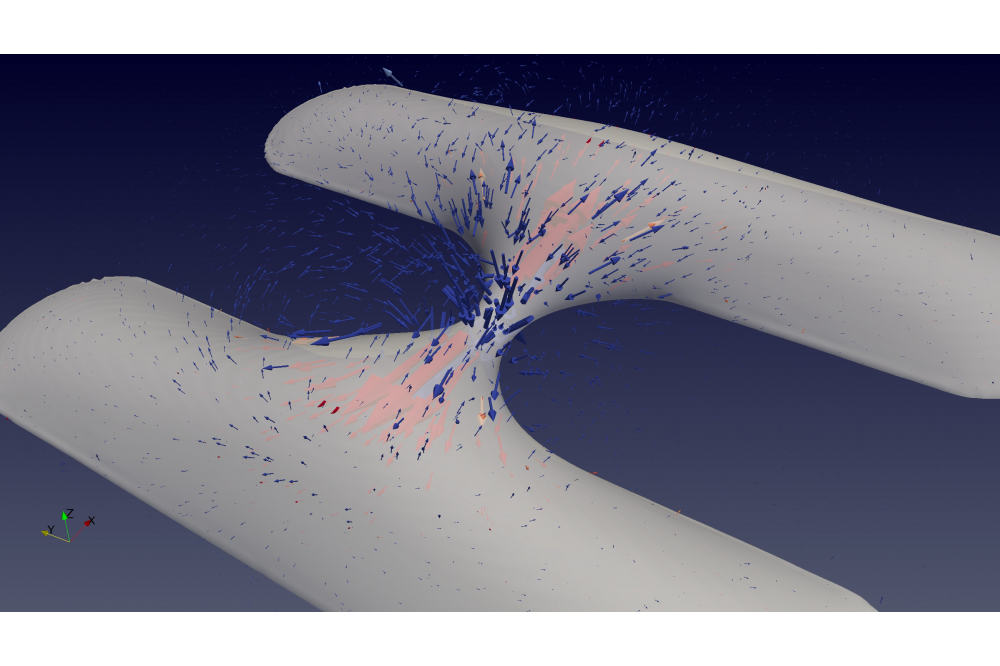Stability of Droplets on Chemically Patterned Surfaces
Introduction
We study the stability and the breakup dynamics of mm-size water droplets on chemically patterned solid surfaces experimentally and numerically. The surfaces are patterned with stripes of different wettability forcing water droplets to form a complex geometry (a so-called “capillary bridge”) in order to minimize surface energy. If the contrast in wettability is large enough, it can be energetically favorable for the droplet to break up into two droplets wetting the hydrophilic regions of the surface. The objective of this work is to study this breakup process in detail using continuum mechanical simulations. Since the resulting mathematical model based on the incompressible two-phase Navier Stokes equations is computationally demanding, the use of HPC resources is mandatory. In particular, the moving interface of the water droplet needs to tracked computationally and the spatial structure of the breakup process needs to be resolved down to the micrometer scale.
Methods
For the numerical simulations, we employ the geometrical Volume-of-Fluid method to solve the two-phase Navier Stokes equations. Particular attention is paid to the boundary conditions modeling the physics of the wetting process. For details of the methods see the publication listed.
Results
The numerical simulations agree well with the experimental data for the breakup dynamics up to a certain length scale, which is determined by the numerical resolution (50μm in this case). It is found that in the early stage of breakup the process is controlled by a balance of inertial and capillary forces. A scaling law similar to the case of a free capillary bridge is observed. In the final stage of breakup, the capillary bridge forms a liquid thread that breaks up due to the Rayleigh-Plateau instability mechanism.
Discussion
The present work shows the ability of the geometrical Volume-of-Fluid method to accurately simulate the breakup of a capillary bridge on a solid substrate. The accuracy of the simulation will be increased further in future research with the help of adaptive mesh refinement to capture the multiscale nature of the process. To this end, we will transfer the methods to a new Volumeof-Fluid solver within openFOAM.




